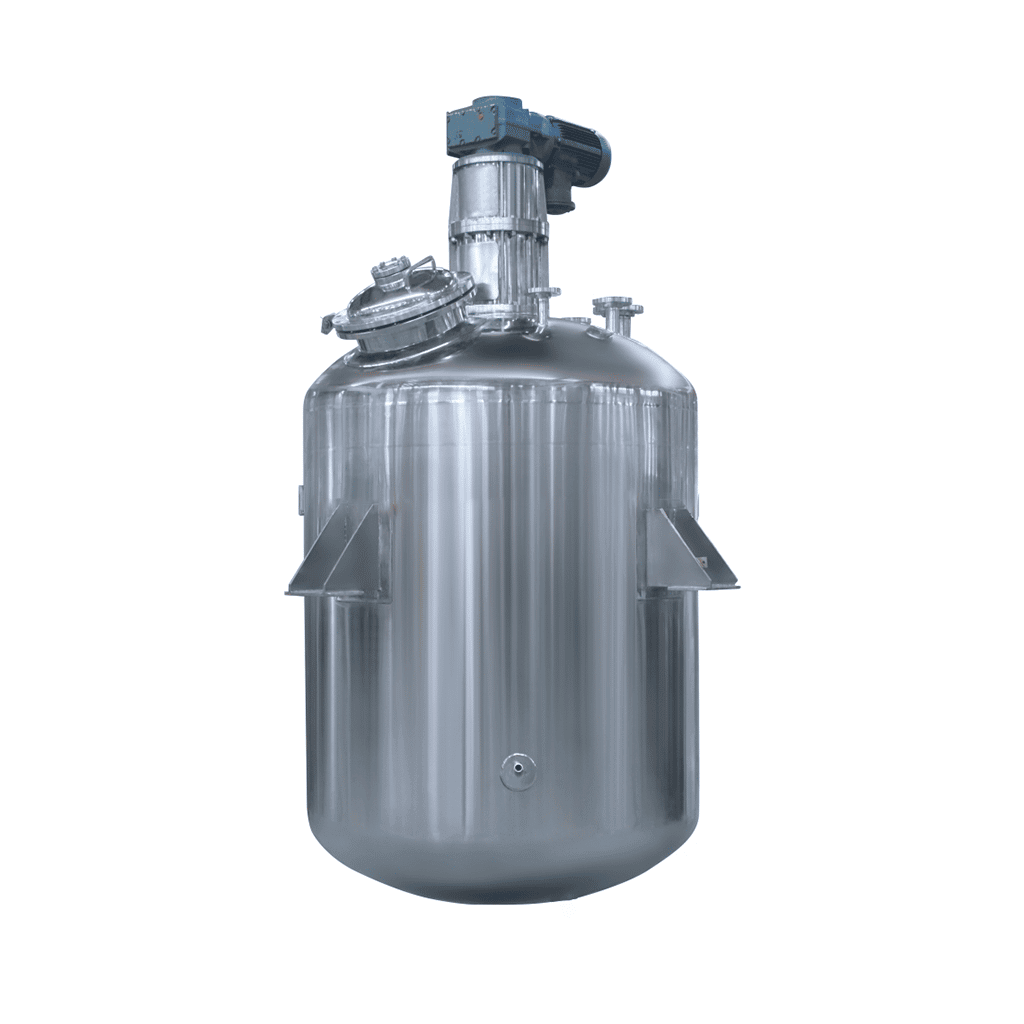
-24-1.jpg)
Stainless Steel Reactor
Stainless Steel Reactor: used in dairy products, sugar, beverages, and other fields
Material
stainless steel (316, 304)
Capacity (L)
10-10000+
Mixing system
anchor, paddle, frame and others
Heating system
electric heating, oil heating and others
A stainless steel reactor is a stainless steel container equipment. The stainless steel reactor consists of a kettle body, a kettle lid, a stirrer, a jacket, a bracket, a transmission device, a shaft seal device, etc. Materials and openings can be made according to user needs and process requirements. Stainless steel reactors are mainly used for stirring, homogenizing, and mixing storage of dairy products, sugar, beverages, food, and various pharmaceuticals.
Request a quoteHow can we choose the appropriate equipment when purchasing stainless steel reactors, and what aspects do we need to consider?
Stainless steel reactor purchase elements
1. The planned output or the full volume of the stainless steel reactor.
2. Determine the physical and chemical properties of the working medium.
3. The working pressure and temperature required by the corresponding production process.
4. Select the sealing form (mechanical seal/packing seal) of the stainless steel reactor.
5. Select the heating form (steam heating/heat-conducting oil circulating heating/electric heating/resistance far-infrared heating).
6. Design of stainless steel reactor agitator.
7. The material of the stainless steel reactor.

The heat transfer jacket of the stainless steel reactor is generally made of ordinary carbon steel. It is a container that forms a sealed space outside the stainless steel reactor kettle cylinder, which is simple and convenient. The stainless steel reactor jacket is provided with inlets and outlets for steam, cooling water, or other heating and cooling media. (If the heating medium is water vapor, the inlet pipe should be close to the upper end of the jacket, and the condensate will be discharged from the bottom; if the heat transfer medium is liquid, the inlet pipe should be placed at the bottom, the liquid will enter from the bottom, and the upper part will flow out so that the heat transfer medium Fill the space of the entire jacket. Sometimes, for larger vessels, to obtain a better heat transfer effect, a spiral baffle is set in the jacket space to reduce the flow area of the fluid in the jacket improve the flow speed of the fluid, and Avoid short circuits, but the structure is more complicated.
When the diameter of the stainless steel reactor is large or the pressure of the heat transfer medium used is high, the welded semi-circular spiral tube or the spiral angle steel structure is often used to replace the jacket structure. In this way, not only the flow rate of the heat transfer medium can be increased, but the heat transfer effect can be improved, but also the compressive strength and rigidity of the stainless steel reactor kettle can be improved.
To improve heat transfer efficiency, a non-condensable gas discharge port is opened at the upper end of the jacket. The distance between the jacket and the body of the container adopts different values depending on the nominal diameter of the container and generally takes 25 to 100 mm. The height of the jacket is determined by the heat transfer area, which is determined by the process requirements. However, it should be noted that the height of the jacket is generally not lower than the height of the material liquid.
It should be about 50-100mm higher than the liquid level in the device to ensure sufficient heat transfer. As the volume of the stainless steel reactor increases, heat transfer problems will arise. The jacket alone is not enough, so a heat transfer baffle can be installed in the stainless steel reactor. The heat transfer baffle can not only increase the heat transfer area, and remove the heat, but also strengthen the stirring effect, and play the role of destroying the eddy current to control the flow pattern.
There are many structural types, the common ones are D-shaped baffles, finger-shaped, sleeve-type, annular tube, elliptical tube baffles, and so on. The heat transfer coefficient of the baffle is much higher than that of the jacket because the cooling water flow rate is large, the tube wall is thin, and the feeding coefficient of the material on the surface of the baffle is also large, so the total heat transfer coefficient value is large. However, when using this heat transfer baffle, structural and cleaning issues should be considered.
All the baffles are required to be placed below the liquid surface because the gas-liquid interface is a site that is prone to scaling.




